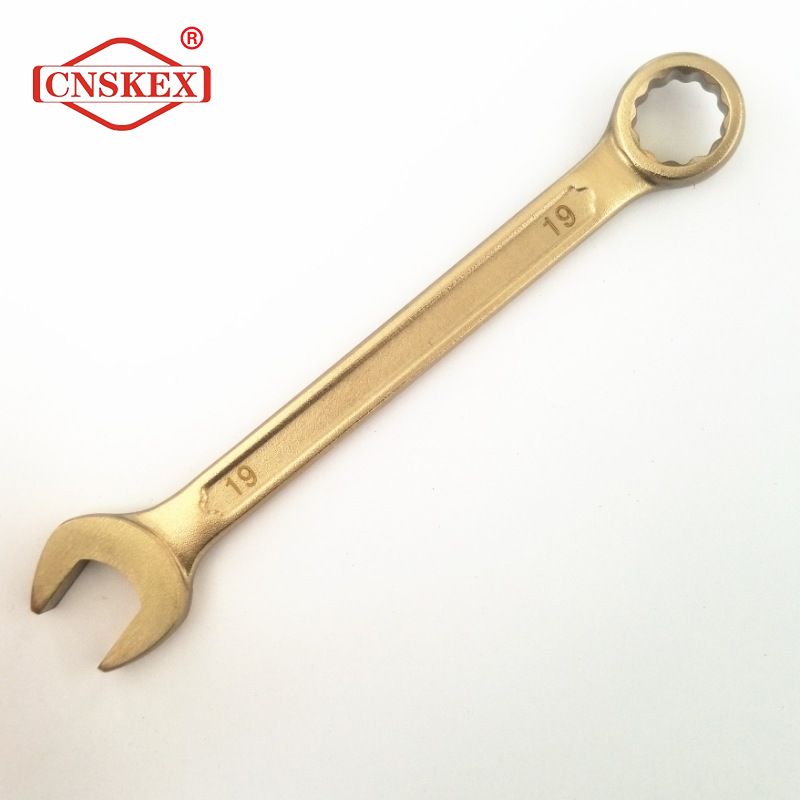Aug. 12, 2023
Tools
In industries where flammable gases, liquids, or vapors are present, even the smallest spark can lead to catastrophic consequences. This potential danger demands the use of specialized tools that eliminate the risk of sparking, and non-sparking wrenches are a prime example. These innovative tools are designed to ensure safety in hazardous environments by preventing the ignition of explosive atmospheres. In this article, we will explore the science behind what makes a wrench non-sparking and why they are crucial for specific work settings.
Understanding the Basics: Spark Formation
Before delving into the intricacies of non-sparking wrenches, it's essential to comprehend how sparks are created in the first place. Sparks occur when two materials come into contact and generate friction or impact. This interaction can create heat, leading to ignition if the materials are combustible. In industrial settings where explosive gases, vapors, or dust are present, even a small spark can trigger a fire or explosion, putting lives and assets at risk.
Non-Sparking Materials and Design
Non-sparking wrenches are crafted from materials specifically chosen to minimize the risk of spark generation. Typically, these materials are alloys, which are combinations of various metals engineered to reduce friction and impact, ultimately preventing heat buildup and spark creation. The two primary materials used in non-sparking wrenches are aluminum bronze and beryllium copper.

Aluminum Bronze: This alloy contains a high percentage of aluminum (around 10%) along with copper. The aluminum content provides excellent corrosion resistance and significantly lowers the risk of spark formation. Aluminum bronze non-sparking wrenches are widely used in industries where safety is paramount, such as oil and gas, chemical, and mining.
Beryllium Copper: Beryllium copper alloys also feature in non-sparking wrenches due to their low sparking potential. These alloys contain a small amount of beryllium, which enhances their strength and conductivity. Beryllium copper non-sparking tools are especially suitable for applications where high strength and durability are required.
The design of Non Sparking Combination Wrench also contributes to their safety features. These wrenches often have rounded edges and carefully engineered shapes to minimize the contact area and reduce friction during use. This design approach further reduces the likelihood of heat generation and spark formation.
Benefits and Applications
Related articles:The primary benefit of non-sparking wrenches is their ability to safeguard personnel and equipment in hazardous environments. Their spark-free operation ensures that workers can perform tasks without worrying about inadvertently triggering an explosion. Non-sparking wrenches find application in various industries, including:
Oil and Gas: Non-sparking wrenches are crucial during maintenance and repair work on drilling rigs, refineries, and pipelines, where flammable gases and liquids are prevalent.
Chemical Industry: Chemical plants often handle volatile substances, making non-sparking tools essential for maintenance and equipment handling.
Mining: Non-sparking wrenches are used in mines where the presence of combustible gases or dust poses a significant safety risk.
Aerospace: In environments where aviation fuels and materials are stored or handled, non-sparking tools ensure the safety of workers and sensitive equipment.
Maritime: Non-sparking wrenches are vital on ships and oil platforms, where the proximity of flammable substances necessitates spark-free tools.
Conclusion
Non-sparking wrenches are a testament to the intersection of science, safety, and innovation. By understanding the materials and design principles that make these tools non-sparking, industries can mitigate the risks associated with spark formation in hazardous environments. These specialized wrenches play a vital role in safeguarding lives, protecting assets, and ensuring smooth operations in settings where safety is of the utmost importance.
Previous: Interpretation of the key points of concrete saw blades in cutting bridges
Next: What are the safety rules for diagonal cutting pliers?
Related Articles
If you are interested in sending in a Guest Blogger Submission,welcome to write for us!
All Comments ( 0 )